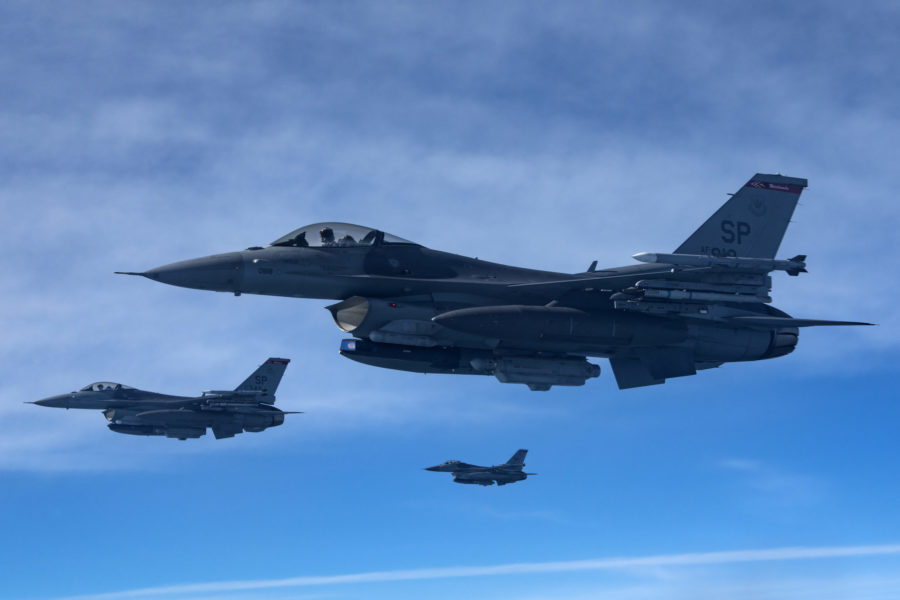U.S. Air Forces in Europe hasn’t changed the way it operates even though Russia is massing forces on the Ukraine border, but U.S. and NATO allies are keeping a close watch on the tensions, USAFE commander Gen. Jeffrey L. Harrigian said Dec. 13.
Speaking at an AFA Mitchell Institute for Aerospace Studies virtual event, Harrigian said the NATO air arms are “working closely together to understand” what Russia’s activities, in all domains, are in order to have a “shared understanding” of what’s going on.
“We’re largely focused on … how we ensure our team is ready, our posture is where it needs to be, and we’re working that in cooperation” with allies and regional partners, Harrigian said, indicating no change in the posture of USAFE in light of Russia’s movements. If partners spot a change in Russian activities or status, they will alert the U.S., he said, and “we [will] all have a better understanding of what options would be available to us.”
He said his “Job 1” is to “offer my best military advice to General [Tod D.] Wolters, [Supreme Allied Commander, NATO], and … up through the Secretary” of Defense.
“Our focus internally is we’ve got to make sure we’re ready. And that readiness piece is across not just the airplanes but the people,” Harrigian said.
“We all want diplomacy to work,” but “as we work through the options we’re going to present, it’s going to all be about avoiding miscalculation” and anything that “takes decision space away from our superiors.”
He’s also communicating to the Airmen of USAFE the seriousness of the Ukraine tensions and emphasizing that Airmen remain resilient.
Harrigian said USAFE and Ukraine have not conducted any joint air exercises in the last couple of years and that non-flying joint drills have been about “force development activities” on which he did not elaborate.
The October 2018 Clear Sky Exercise was the last joint air drill between the two countries. It paired U.S. Air National Guard and Lakenheath, U.K.-based F-15s with Ukrainian MiG-29 Fulcrums, Su-27 Flankers, and Su-24 Fencers to “increase the level of interoperability” between the air arms, according to a USAFE release. U.S. C-130s and KC-135 tankers participated as well.
Harrigian has had conversations with the Ukrainian air chief, but not recently. “There’s a relationship there. We expect that to continue,” he added.
Relative to operating in proximity to Russia, Harrigian said, “We have, over the last 18 months, continued to execute operations in international waters,” and “that has not changed at this point.” USAFE has exercised with the U.S. Navy and partner navies in the Baltic and Black Seas, refining tactics, techniques, and procedures “and the way we do business,” he said. This practice will ensure an up-to-date shared understanding of TTPs in the event of a crisis, Harrigian added.
He said Bomber Task Forces dispatched to Europe by Air Force Global Strike Command have been a great success delivering the message that the U.S. is able to rapidly deploy heavy airpower to the continent. Harrigian said allies and partners are lining up to participate in future such deployments, either running intercepts or escorting American bombers.
The 9th Expeditionary Bomb Squadron completed a six-week bomber task force mission Nov. 15 across the North Sea, Baltics, and Black Sea region, integrating coalition capabilities and practicing agile combat employment. The next such deployment will happen soon, Harrigian said. The deployments are also essential in familiarizing bomber pilots with operating in Europe so that if they need to conduct a real-world contingency, “it won’t be the first time” they’ve flown in the region.
